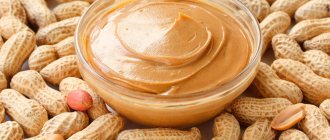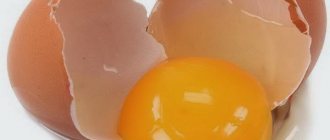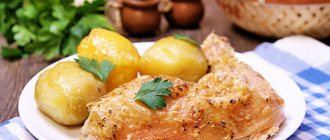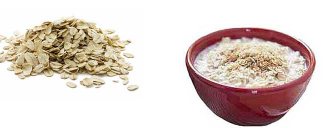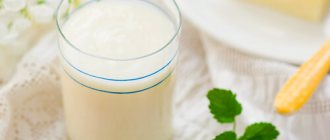Powdered sugar is one of the most accessible means for decorating confectionery and baked goods. Ordinary sugar crushed into dust, literally, can transform any cake - just use a stencil to create a pattern on the chocolate icing using white powder, which will effectively contrast with the dark surface. However, even an ordinary cupcake or donut sprinkled with powdered sugar looks much more appetizing than in its “usual” form.
Product production technology
This spice is produced by grinding sugar crystals into powder. In industry, for this purpose, equipment of very impressive dimensions is used, which is called an “impact-reflective mill”. The starting raw material can be not only the well-known beet sugar, but also cane sugar.
Of course, it is simply impossible to ensure that all ground particles are the same size. Therefore, the finished product is divided into several categories.
The largest particles are not yet powder, but they are no longer sugar. It is this powder that is used as a sweetener in instant coffee sticks.
Medium grind powder has also found application in the creation of confectionery products. It is used as a topping for marmalade and Turkish delight.
Finally, the powder with the smallest particles is the same powdered sugar that we know so well. After it passes through the impact mill, it is dried and mixed with a number of additives.
Due to the fact that the powder has a very high hygroscopicity, it is necessary to add substances to it that would effectively absorb excess moisture, so that the powder will retain its texture and caking will not occur. Most often, corn starch is used as such an additive. In addition, even before the grinding process, sugar cane fiber, rice flour or powdered invertase, a special enzyme that is widely used in the food industry, can be added to the raw materials intended for the production of powder.
Ideal powdered sugar, which was prepared in full accordance with existing technology, will be snow-white. Any impurities must be absent. In addition, the product should not have any odor.
Chicken - the meat contains protein, fat, minerals, vitamins, and extractives. Fat has a high melting point. Chicken meat is easy to digest. Its digestibility is 93%. Chicken broth is aromatic, rich in extractive substances (potassium, sodium, phosphorus, iron, copper). It belongs to gourmet products.
Potatoes are a tuber crop. Tubers are modified shoots in which plants store nutrients, mainly starch. Contains proteins, fats, carbohydrates, dietary fiber, organic acids, mono- and disaccharides, starch, ash, vitamins (PP, Beta-carotene, A, B1, B2, B5, B6, B9, C, E, H).
Lettuce - lettuce is the earliest ripening, forming a rosette of long (10-15 cm) pale green leaves with an oily surface and a delicate taste. These vegetables are early ripening, juicy, tender, rich in nitrogenous substances (3%), minerals (2%), especially iron, phosphorus, iodine, calcium, vitamins C, P, K and group B, carotene. All types of salad are consumed fresh as an independent dish.
Granulated sugar consists of pure sucrose and is a valuable food product and raw material for the confectionery industry. Energy value 100 g. Sahara. 375 kcal, or 1569 kJ. A person needs 100 grams per day. Sahara. Sugar is easily absorbed by the body, restores strength, has a beneficial effect on the nervous system, but its excess is harmful. The sugar industry produces granulated sugar and refined sugar. It is obtained from sugar beets.
A chicken egg contains all the nutrients necessary for human life. Chicken eggs contain 74% water, 12.6% protein, 11.5% fat, 0.6 - 0.7% carbohydrates, 1% minerals, vitamins A, E, B1, B2, B6, PP. Energy value 100 g. Chicken eggs are 157 kcal or 657 kJ.
Table salt , of natural origin, almost always contains admixtures of other mineral salts, which can give it shades of different colors (usually gray). It is produced in different forms: refined and unrefined (rock salt), coarse and finely ground, pure and iodized table salt, sea salt, and so on. Consists of sodium chloride and minor impurities of other mineral salts.
Butter is a food product made by separating or churning cream obtained from cow's milk (less commonly from the milk of sheep, goats, buffalos, yaks and zebu). It has a high milk fat content (50-82.5%). Contains fats, proteins, carbohydrates, ash, moisture.
Wheat flour is a powdery product obtained by grinding cereals. It comes in wheat, rye and corn. Flour contains water 14 - 15%, proteins 10.3 - 12.9%, fats 0.9 - 1.9%, vitamins B1, B2, PP. Energy value 100 g. flour 323 - 329 kcal or 1352 - 1377 kJ. The higher the grade of flour or the more carbohydrates it contains, but the less proteins and fats.
Refined powder - powdered sugar - granulated sugar, ground to a dusty state. It is used mainly in the preparation of confectionery products. Powdered sugar is often sprinkled on baked goods.
Vegetable oil is a product extracted from plant raw materials and consisting of triglycerides of fatty acids and accompanying substances (phospholipids, free fatty acids, waxes, sterols, coloring substances, etc.). contains fats, water, fat-soluble vitamins (provitamin A, vitamin E).
Ground black pepper is the most versatile spice for many dishes. Contains essential oil and alkaloid piperine.
Vanilla powdered sugar is made by placing vanilla beans and powdered sugar in one container. too fast. Vanilla fruits contain glucovanillin glycoside, essential oil (0.5-0.8%), mucous and tannins. During fermentation, glucovanillin is broken down into vanillin and glucose. The main aroma element of vanilla is vanillin-4-hydroxy-3-methoxybenzaldehyde. Its content is in the range of 0.75-2.9% (up to 12.5%).
Strawberry. Strawberries contain many biologically active substances. These are sugars, organic acids, vitamins. C and B, P-active substances, as well as a complex of microelements in an easily digestible form (calcium, phosphorus, iodine, potassium, iron, etc.), pectins. Strawberries have 41 kcal calories. Nutritional value of strawberries: proteins - 0.8 g, fats - 0.4 g, carbohydrates - 7.5 g
Mascarpone (Italian Mascarpone) is an Italian cream cheese. Comes from the Lombardy region. When producing mascarpone, cream with a fat content of 25% is heated in a water bath to 75-90 °C and, while stirring, tartaric acid (traditional method), lemon juice or white wine vinegar is added to begin the process of coagulation (clotting) of the milk protein. After a short heating to complete coagulation, the product is cooled and subjected to self-pressing in linen bags suspended in a cool place to remove whey. Due to the non-use of lactic acid cultures (starters) and enzymes for coagulation, the name “cheese” can be applied to it with a large degree of convention.
Lemon. All parts of the lemon fruit are used in cooking: pulp, juice and zest. The property of citric acid to soften collagen is widely used in meat dishes, and the strong fresh smell makes lemon a good addition to fish and seafood. Lemon juice can prevent browning of apples, avocados and bananas. Lemons can be added to salads, sauces, sandwiches, and rice for a flavor accent. Lemons are widely used in confectionery. The zest is added to baked goods, cakes, creams, soda is quenched with lemon juice, lemon slices are served with tea, coffee or used to decorate cakes. Cocktails, lemonades, ice cream and other refreshing desserts are prepared using lemon juice. Some types of cheese are curdled with lemon juice. Alcoholic drinks are flavored with lemon zest, and lemon slices are served with cognac and vodka.
Vanilla sugar is sugar mixed with vanillin, a synthetic flavoring substance. It is sold in a hermetically sealed paper bag. This is the most common and most commonly used flavoring additive in dough.
Mint is one of the most common spices in the cuisine of peoples all over the world. Dried or fresh mint leaves are used in a variety of areas of the food industry and home cooking. It is especially widely used in oriental cuisine, and not only as an excellent spice suitable for a wide variety of products. Fresh mint leaves are often used in cooking to decorate dishes, including sweet ones. In culinary arts, mint is also used as a food coloring. Since fresh mint wilts very quickly, it must be kept in a cool place, preferably in the refrigerator. As a result of heat treatment, mint loses its freshness, so it should be added to hot dishes immediately before serving.
Powdered sugar is granulated sugar ground to a powdery state. It is used primarily in the preparation of confectionery products, such as icing sugar. Powdered sugar is often sprinkled on baked goods. Ready-made powdered sugar is available for sale; it is also easy to make it yourself from granulated sugar, grinding it in a coffee grinder or using your hands in a mortar.
Ladyfingers are not only a grape variety, but also a delicious sponge cookie that gets its unusual name because of its oblong shape (like eclairs). The recipe for lady fingers is quite simple, and it doesn’t take much time to prepare it, just like it doesn’t take much time to buy expensive products. In addition to being a stand-alone dessert for tea, the lady fingers recipe can serve as the basis for Italian desserts such as tiramisu or ice cream cake.
Champignons contain proteins, carbohydrates (fiber and sugar), minerals (iron, potassium, zinc, phosphorus) and vitamins: E, D, B. Champignons have antibacterial and antitumor activity. Eating champignons reduces the risk of atherosclerosis and reduces cholesterol levels in the blood. Pantothenic acid contained in champignons helps relieve fatigue.
Dill is a spicy annual plant, cold-resistant, demanding of moisture and light. Dill contains essential oils, pectins, flavonoids, carotene, chlorophyll, a lot of vitamin C, B1, B2, B5, B9, PP, potassium salts, phosphorus, iron, chlorogenic acid. Dill seeds contain essential oil, fiber, flavonoids, fatty oil, sugars, carotene, and nitrogenous substances.
Parmesan cheese is an Italian hard cheese with a scaly-grainy and rather brittle structure. Cheese contains many essential proteins and fatty acids, but at the same time this cheese contains virtually no cholesterol, which is why it is often used in various diets. Parmesan is rich in vitamin A, groups B and D and E, minerals (calcium, phosphorus, sodium, selenium), which makes it an indispensable product in the diet of children, the elderly and people with high physical activity. 100 g of Parmesan cheese contains on average about 392 kcal.
Olive oil is a vegetable oil obtained from the fruit of the European olive (lat. Olea europaea). In terms of fatty acid composition, it is a mixture of triglycerides of fatty acids with a very high content of oleic acid esters. It has a color from brownish-yellow to greenish-yellow and a slight bitter taste. Melting point +7 +10 °C, depending on the origin of the oil. One of the national products of Greece, Italy and Spain. Since antiquity, this oil has been an integral part of the Mediterranean diet. Since ancient times it has been used to illuminate temples and mosques, as well as during the performance of Christian and Jewish rituals (see oil). In Russia, until the end of the 19th century, the highest grade olive oil was called Provençal, and the lowest - wooden.
Balsamic vinegar . Traditional balsamic vinegar is very dark in color, has a sweet, fruity aroma, and has a thick consistency. There is also a simplified (and cheaper) version of balsamic vinegar made from red wine vinegar. This balsamic vinegar has a lighter color and differs in taste characteristics. Balsamic vinegar is used in the most famous restaurants in the world in the preparation of salads, marinades, desserts, and soups. A few drops of this seasoning highlight the taste of cheese, strawberry salad, an ordinary omelet and even ice cream.
Soy sauce is a product of fermentation of soybeans under the influence of fungi of the genus Aspergillus. It is a very dark-colored liquid with a characteristic pungent odor. Soy sauce contains many mineral elements, vitamins and amino acids. Due to the presence of glutamic acid derivatives, it has the property of brightly emphasizing the taste of dishes. Calorie content of soy sauce is 50.66 kcal. Nutritional value of soy sauce: proteins - 6 g, fats - 0 g, carbohydrates - 6.66 g.
Cilantro is a spicy-aromatic annual plant of the Apiaceae family. In cooking, fresh and dried herbs are used (they are called cilantro) and dried seeds, whole or ground (they are called coriander). Young leaves have a bitter taste and a sharply spicy aroma. The dried seeds have a subtle aroma of anise and citrus.
Black pepper (lat. Píper nígrum) is a perennial climbing plant, a species of the genus Pepper (Piper) of the Pepper family (Piperaceae). The plant is cultivated for its fruit, from which, through various processing, spices such as black pepper, white pepper, green pepper and pink pepper are obtained (the fruits of other plants not related to black pepper are also known under the names green pepper and pink pepper). These spices are used both in ground form and in peas. Pepper contains resin (1-2%), fatty oil (6-12%), and a lot of starch. The hot substance in pepper is the alkaloid piperine (5-9%), and the smell is due to the presence of essential oil (0.9-2.5%). The essential oil contains dipentene, phellandrene and the sesquiterpene caryophyllene.
Beef is an excellent supplier of complete protein and iron, which helps oxygenate the body's cells. Men who go to the gym or work physically should especially pay attention to this meat. There is even less fat in this meat than in chicken. Beef contains low-value proteins such as elastin and collagen. And as you know, collagen is the main building material of interarticular ligaments. Beef also contains a wide range of nutrients, including valuable minerals, including zinc, which our body needs to maintain immunity. Calorie content of beef - 218.4 kcal. Nutritional value of beef: proteins - 18.6 g, fats - 16 g, carbohydrates - about g.
Wasabi is a seasoning used in Japanese cuisine. It is known as “Japanese horseradish”. Wasabi is the dried and crushed root of a plant of the same name in the cabbage family, which has a very strong odor. The caloric content of wasabi is 10 kcal. Nutritional value of wasabi: proteins - 10 g, fats - 0 g, carbohydrates - 15 g.
Chemical composition and calorie content
The energy value of the product is 339 kcal per 100 g. As for nutrients, proteins and fats are completely absent in its composition, and carbohydrates contain 99.8 g.
If we talk about the chemical composition, it is almost identical to the composition of the raw materials that are used to prepare the product, that is, sugar.
Chemical composition: minerals and vitamins (mg/100g)
| Calcium, Ca | 1 mg |
| Iron, Fe | 0.06 mg |
| Potassium, K | 2 mg |
| Sodium, Na | 2 mg |
| Zinc, Zn | 0.01 mg |
| Copper, Cu | 0.007 mg |
| Manganese, Mn | 0.004 mg |
| Selenium, Se | 0.6 mcg |
| Riboflavin (vitamin B2) | 0.019 mg |
Use in cooking
There are many ways to use powdered sugar.
- The product can be used as a topping for baked goods and other sweets. Donuts, cupcakes and cookies sprinkled with sugar powder have been known to each of us since childhood.
- The powder is used to prepare protein-based confectionery creams. In this case they turn out more tender and airy.
- The product can be used as a substitute for regular granulated sugar. Because the powder is a powder rather than crystals, it is easier to mix with other products. In this case, the structure of the finished dish will be more uniform.
- The product is used for preparing cocktails and soft drinks.
- Sugar powder is the ingredient that helps give the legendary Savoiardi dessert its crispy crust.
- Experienced confectioners use powdered sugar to prepare glazes that will not be subjected to heat treatment, but should be as smooth as possible, almost “mirror-like.” In this case, the powder is mixed with citrus juice, and sometimes protein is added.
- It is powdered sugar that is used to decorate the so-called “naked” cakes - a type of dessert that has recently gained popularity, which is a perfectly smooth sponge cake, which is covered with cream or glaze only on top, leaving the sides in a “natural” form so that the cake layers and layer are visible. Cooks often decorate such cakes with seasonal berries and fruits, which are sprinkled with powder. However, bad luck! Ordinary powder, once on a damp surface, will melt very quickly. Therefore, to decorate fruits, a special powdered sugar was created - heat-stable or non-melting. Its “trick” is that after grinding the raw materials, hydrogenated fats are added to it, dried and ground again. The result is a product that is resistant to heat and humidity.
Benefits and medicinal properties
The main area of use of powdered sugar is the food industry. However, there are also very unusual ways of using it for medical purposes.
For example, many veterinarians know a very old method of treating purulent conjunctivitis, blepharitis and keratitis in animals - blowing sweet powder into the eye.
“Human” pharmaceuticals use sugar powder to create those same multi-colored glazes that many tablets are “dressed” in.
However, that's not all. In folk medicine, there is a very unusual way to treat otitis media. To do this, you need to mix powder and vegetable oil in equal parts, slightly warm the mixture on a candle and drip it into the sore ear. After this, the ear canal is closed with cotton wool and kept for up to twelve hours. It is believed that a single procedure is enough to improve the patient's condition.
And finally, another way to use the product for medical purposes is related to the ability of powdered sugar to absorb water. As you know, wounds after surgical interventions can heal very poorly, they constantly get wet, inflammation begins, which sometimes even antibiotics cannot cope with. Oddly enough, powdered sugar is a very effective remedy for solving this problem. It absorbs excess moisture, dries the wound, as a result of which the microbes that cause inflammation simply die from dehydration. As a result, the regeneration process begins to go faster.
Thus, in 2013, a publication about a patient whose leg was amputated received wide resonance in the British medical media. It was not possible to relieve the inflammation; the wound simply “did not want” to heal. It began to drag on only after one of the doctors, who lived in Zimbabwe for a long time, decided at his own risk to try a method that is extremely popular in Africa. He used a dressing with powdered sugar to stop the wound from getting wet. As a result, the inflammation was removed, and the wound began to heal.
Of course, this story should not be regarded as a call for self-medication and for sprinkling sweet powder on any wounds. But deep scratches will heal faster if you wash them with boiled water, sprinkle them with powdered sugar and apply a bandage, which should be changed daily.
Beneficial properties and harm of the product
Most people imagine powder only as decoration on desserts. However, this product has beneficial properties that not everyone knows about. For example, powdered sugar is often used in the medical industry to make colorful capsule shells that contain medications.
There are also old folk remedies based on powdered sugar that help fight otitis media. The product is mixed in equal proportions with vegetable oil and heated slightly, after which, using a pipette, one drop is instilled into the ear canal and covered with cotton wool. Of course, this method of treatment cannot be called a panacea, but the method is quite effective.
The benefit of powder is that it absorbs moisture well, so it is used for medical purposes to heal wounds. Back in 2013, an unusual story happened in one of the clinics. After the leg was amputated, the wound did not heal for a very long time, and severe inflammation developed. And then British university lecturer Moses Murandu tried a method that is quite widely used in Africa: he simply sprinkled powdered sugar on the wound. After some time, it was noticed that the wound began to dry out and gradually heal. © https://ydoo.info/product/saharnaya-pudra.html The scientist was closely involved in research on the use of sugar for medical purposes and as a result received a grant of 25,000 pounds for the development of scientific projects. In his work, he conducted a series of experiments in which powdered sugar was applied to wounds, and it, in turn, absorbed all the moisture that formed in the wound. The essence of the method is very simple: bacteria vitally need moisture for normal development, and powdered sugar perfectly absorbs liquid, leaving microorganisms without nutrition and they die.
Interestingly, powdered sugar contains small amounts of some useful microelements and substances, such as calcium, potassium and sodium. In addition, it also contains iron, which is a very important substance for the body. In addition, the product contains vitamins A, H and E.
However, do not forget that powdered sugar is regular sugar that has been ground into dust, and excessive consumption of the product can cause problems with:
- skin;
- cardiovascular system, as it can increase cholesterol levels;
- Gastrointestinal tract and other organs.
Despite the fact that powdered sugar contains both potassium and calcium, the product can destroy tooth enamel. This is due to the fact that there are very few of these substances there, and there are simply not enough of them to fully protect the teeth. In addition, people with diabetes should avoid powder, as this can cause a surge in blood glucose. It is also necessary to use the product in moderation for those who are struggling with excess weight, are on a diet or play sports.
Powdered sugar is used to repel ants. This method is especially good in the garden and in the house where there are children or animals. The powder is simply mixed with soda in equal proportions and the resulting mixture is poured into holes or scattered in the corners of the house. Ants follow the sweet smell, but when they eat the “delicacy” they die from the soda. Some people prefer to add semolina instead of soda, but the principle of action does not change.
Harm and contraindications
And yet, since powdered sugar is pure sugar, it has all the harmful properties and contraindications inherent in this product. So, first of all, it is distinguished by its high calorie content and literally “off-scale” amount of carbohydrates in its composition. Therefore, this product is contraindicated for people suffering from diabetes. For the same reason, those who are overweight should not overuse dishes that contain the product.
In addition, the product can have a negative effect on the condition of tooth enamel and increase cholesterol levels in the blood. So in any case, you shouldn’t get carried away with treats that contain it.
Powdered sugar (Superfine, Ultrafine, Bar, Caster Sugar)
Finely ground granulated sugar. Used in the preparation of delicate desserts, puddings, mousses, creams. It dissolves quickly in water, making it suitable for sweetening cold drinks.
| Powdered sugar | Quantity |
| Cup | 140 g |
| Tablespoon | 25 g |
| Tea spoon | 10 g |
| Cup | 190 |
Calorie content – 374 kcal Recipes with powdered sugar: Brazo de Mercedes Ensaimadas – sweet pastries made from puff pastry (Ensaimada de Mallorca)
Cooking at home
You can also make powdered sugar at home. The easiest way to do this is to use a coffee grinder. However, keep in mind that in this case the unit will have to be seriously cleaned first, unless, of course, you want the finished product to smell like coffee. Taking into account the fact that the coffee grinder cannot be washed, you will have to make do with cleaning it with a soft cloth soaked in a soapy solution. Please note that it should be damp, not wet.
Also, if you use a coffee grinder to prepare the powder, you will have to grind the granulated sugar several times.
Another way to get the powder is to make it in a blender. In this case, there are several important factors to consider.
First of all, the blender bowl should not just be dry, but perfectly dry. Even the slightest trace of moisture will cause your powder to turn into clumps that you won't be able to work with.
After you have crushed the sugar and turned off the blender, take your time to open the lid of the bowl. The sugar dust that formed during sugar grinding must have time to settle.
Do not store the finished product near heat sources to prevent it from melting.
If you are going to use homemade powdered sugar to create colored icing, add coloring before grinding the sugar. Then, during the cooking process, all the ingredients will be thoroughly mixed, resulting in an ideal consistency.
To prepare powder in a blender, pour a glass of sugar into the bowl of the device. Turn on the unit at maximum speed and grind the crystals for three minutes. Don't overdo it - if you don't stop in time, the parts of the blender that heat up during operation can melt the powder.
Sift the finished product, remove and discard all lumps. It should be stored in an airtight container, or even better, used immediately for its intended purpose.
Cooking cranberries in powdered sugar
Cranberries in powdered sugar are a delicacy that is extremely difficult to remain indifferent to. A delicate sweet shell, under which there is a real explosion of aroma and tart acid. You can prepare this amazing dessert at home, and with minimal skill.
There are two options for preparing cranberries in powdered sugar: with and without egg whites. We'll give both.
Recipe 1
Best materials of the month
- Why you can't go on a diet on your own
- 21 tips on how to avoid buying stale food
- How to keep vegetables and fruits fresh: simple tricks
- How to curb your sweet cravings: 7 unexpected products
- Scientists say youth can be extended
For it you will need one glass of fresh cranberries, 100 g of powdered sugar, two tablespoons of water and three tablespoons of granulated sugar. The latter will be needed to prepare the sugar syrup necessary to create a hard shell for the berry.
Dissolve granulated sugar in water, heat over low heat and stir until completely dissolved. You don't have to bring it to a boil. After this, let the syrup cool so that the cranberries do not cook.
Wash and dry the berries carefully so as not to damage them.
Sift the powder using a sieve to remove any lumps. You can roll the cranberries on a baking sheet or in a deep bowl - whichever is more convenient for you.
Immerse a portion of cranberries (about twenty pieces) in syrup so that the berries are completely covered. Remove with a slotted spoon and let the syrup drain well. After this, dip one berry at a time in powdered sugar so that the berries do not touch each other. Dust the top of the cranberries until they are completely covered in white powder.
After this, begin to lightly shake the baking sheet or bowl so that each berry turns into a “snowball”. After this, carefully place the cranberries on the parchment and let them dry for an hour.
Making powdered sugar
Making powdered sugar is a simple production at first glance. Of course, cooking at home does not require any special equipment or products. All you need is regular sugar and a coffee grinder, food processor, blender or any other device that can grind sugar into dust. But on an industrial scale, manufacturing a product is a troublesome task.
The first thing a consumer who buys powdered sugar in a store needs to know is the grinding levels, there are only three of them:
- Coarse grind. In fact, such a product should not be called powder, since it still contains small grains of sugar that can crunch on the teeth.
- The medium grind is closer to powder, but still contains barely noticeable sugar grains. This grinding is suitable for sprinkling confectionery products, such as marmalade or marshmallows.
- Fine grinding is a product with exactly the texture that can be called powdery in the literal sense of the word. The product of this grinding is used to prepare glaze, mastic, meringue and other desserts.
If the powder is made at home, then there will be no additives in the composition, but on an industrial scale it is permissible to add sugar cane (1.6%) or edible wood (4.5%). The addition of rice flour is also allowed, but this additive gives the product a not entirely pleasant taste. The manufacturer also has the right to add a special component, for example, corn starch, which prevents the product from caking.
The food industry has come a long way. Nowadays, non-melting, or, as it is also called, heat-stable, powdered sugar is used to decorate cakes, pastries, Easter cakes and other things. The peculiarity of this product is that after it is sprinkled on the product, it does not melt, but remains in a stable state for a very long time. This is possible due to the addition of hydrogenated fats to powdered sugar. After their introduction, the entire mixture is mixed well and dried. As a result, no additional aromas or tastes are felt in the product. This type of powdered sugar is a godsend for many confectioners, as it sticks well to both fruit and any glaze. It is impossible to make such a product at home, since it is difficult for the average buyer to purchase hydrogenated fats.
All additives are clearly regulated by GOST, and if the buyer finds a component in the composition that is prohibited, then he has the right to contact the manufacturer with a claim regarding consumer deception.




